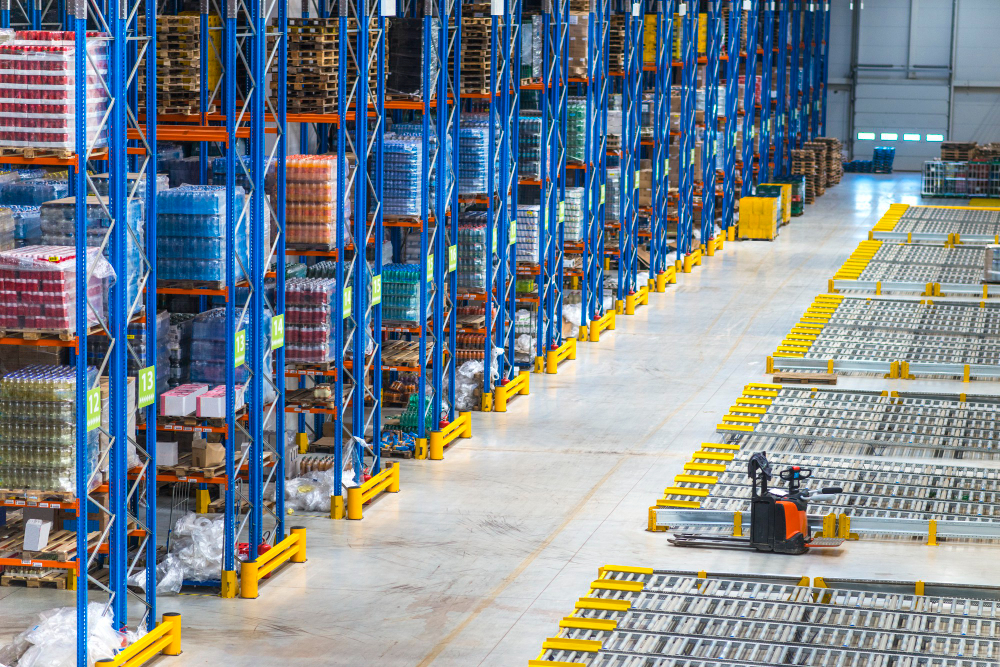Safe Use and Careful Maintenance of Warehouse Racking Systems
Warehouse racking systems is one of the most space-efficient forms of storage there is, capable of holding tonnes of goods in a minimal footprint. But the combination of vertically stacked heavy loads and fast-moving workplace transport (commonly forklifts) around these stacks brings its own set of risks.
Minimising these risks involves concentrating on the following three areas:
- ensuring racking is built, loaded and, if necessary, modified in line with manufacturers’ guidelines
- encouraging safe behaviour among employees loading and unloading or working around racking
- monitoring any damage to racking frames and ensuring repairs don’t compromise their strength.
Shelf life
Racking systems should be installed by competent assemblers in line with the codes published by the of the storage trade body, the Storage Equipment Manufacturers’ Association (SEMA) (www.sema.org.uk).
Manufacturers are required to provide safe loading data for all racking systems. For new installations, SEMA members will supply load data notices for you to display at the end of each run of racking, stating the maximum loading weights for bays and individual beams and the height of the first beam level.
All beams should have safety locks fitted. These low-cost components are designed to prevent the beam being raised accidentally when the pallet below is lifted, potentially dislodging two or three 1000kg pallets, bringing them down on the driver and anyone else below.
Any changes to beam levels need to be made with careful reference back to the manufacturer or supplier – get their confirmation, in writing, that the racking has the capacity to cope with the configuration you want. As Figure 1 (see over) shows, raising a lower beam by a few centimetres affects the loading capacity of the whole frame.
Set and enforce adequate handling clearances between pallet loads and the racking frame around them. SEMA specifies a minimum clearance of 75mm between the top of the load and the beam above and on each side. These are absolute minima and the more clearance you can allow, the safer your operation. Too little clearance above a load makes it difficult to remove the load without hitting the beam above. Above all, pallet loads should not be stored hard up against frames; this risks damaging the frame uprights and bracing members.
Good Housekeeping
As noted already, the combination of slim frames and constant movement of heavily weighted vehicles (4.5-tonne forklifts, for instance) around and between them in warehouses and depots means that it is wishful thinking to expect that racking will not sustain knocks at some point. Your aim should be to keep those knocks to a minimum and to be aware of every one the system takes.
Strictly enforced rules on safe driving, speed limits, observing floor markings – all the standard features of a workplace transport policy – are the starting point. Left to their own devices, lift-truck drivers may assume there is enough of a safety margin left in the construction of good racking to allow for limited damage. This safety factor may well exist, but you must not let employees take it for granted. Part of their job descriptions should be to work in a way that avoids damage to the frames while loading or unloading or simply working near the racking.
Removable column guards or guard-rails are options to prevent lift trucks getting too close to the racking structure. Corner uprights are especially exposed and worth protecting and/or painting a bright colour to make them highly visible.
All workers should be trained to keep aisles between racking free of anything that might obstruct vehicles. Pallet loads or debris will reduce the clearance for drivers, making it more likely they will collide with the surrounding frames. Good housekeeping will not only help avoid slips and trips but also contribute to vehicle safety. In a recent incident, a wire-guided forklift was deflected by some shrink-wrap packaging left on a warehouse floor which broke the wire contact, causing the truck to career into nearby racking.
Any combination of alterations, damage and misaligned loading can compromise the frame structure to the point of collapse, even when it is not overloaded. You need to monitor and assess any damage to the racking structure, and this means anyone working around the racking needs to understand the importance of reporting any damage, whether it is the driver who clips the frame turning at the end of a bay or the depot manager noting a beam deflection during a stock-check.
Your warehouse racking should be inspected at least annually by a SEMA-approved rack inspector. Ideally you should contract an independent inspector without ties to a supplier/repairer then act quickly to fix any defects they report.
It’s not just the condition of the racking that needs monitoring. The state of the pallets placed on the racks can also affect overall stability and safety, so these need watching too. You should have a system of reporting damaged pallets so they can be removed and returned to the pool for repair or disposal.
Under Repair
Where monitoring or an independent inspection throws up damage to uprights or beams that could compromise safety, the bay should be offloaded and employees warned not to use it until remedial repair work is completed. The usual course is to replace damaged sections with like-for-like components. Splicing new sections into damaged areas or welding in “foreign” sections into existing racking is not an adequate form of repair. Check that anyone working on your racking can prove their competence with a SEIRS card that shows they have been through SEMA’s Storage Equipment Installers Registration Scheme, which is supported by the HSE.
Racking is literally part of the furniture in warehouse racking and depots, but that does not mean you can afford to take it for granted in your health and safety assessments.

